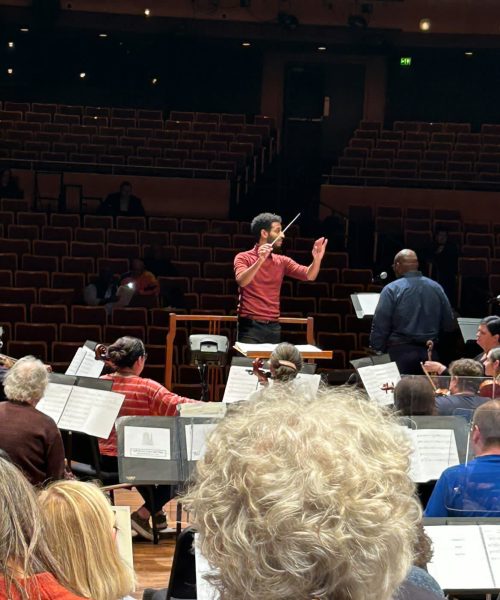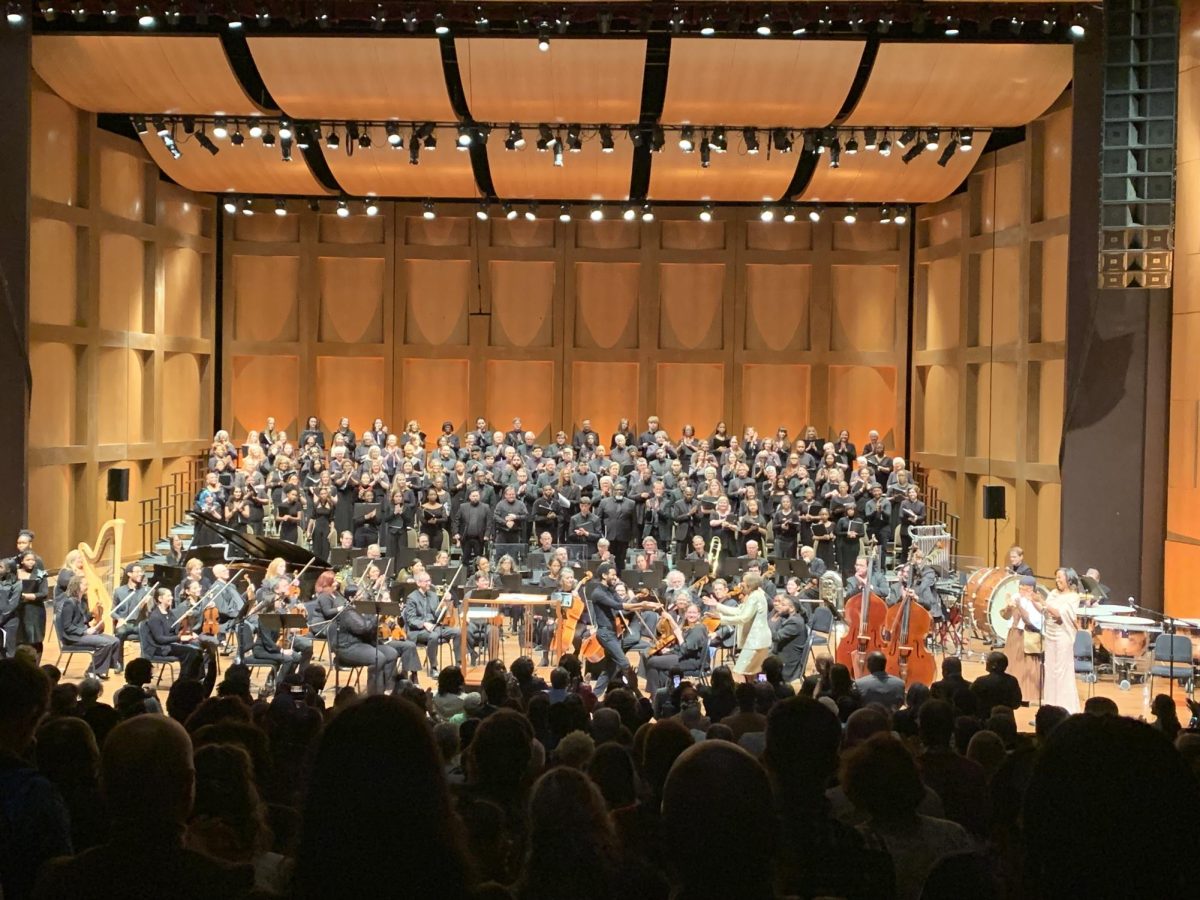Looking at the stage, she watches as the conductor moves his arms to a precise rhythm. Then, Earnestine Robinson, the composer, hears over a hundred voices begin to perform her musical creation while images of a historical figure flash through the audience’s minds.
Students learn about many historical figures in school throughout the years. One of these figures is the conductor of the Underground Railroad, Harriet Tubman. Tubman’s story has been told in hundreds of ways, but Earnestine Robinson’s telling is a bit different. Robinson composed the “Harriet Tubman Oratorio,” inviting over a hundred singers from across Memphis to perform it. Some of these singers are members of the White Station High School choir, like Gabby Cain (10) and Tamia Anderson (12).
“This is a new way to express the story of Harriet Tubman, you know, not just … in a history class, but in a musical way and in a creative, theatric[al] way, to teach people and let people feel the story of Harriet Tubman,” Cain said.
Harriet Tubman is often seen as one of the most famous abolitionists from the 1800s. Tubman was born a slave but eventually escaped to Baltimore, Maryland. She went on to lead around 300 slaves to freedom.
“I knew a lot about her story, like how she used to be a spy for the civil war, and … the visions she had and stuff,” Anderson said.
The “Harriet Tubman Oratorio” tells Tubman’s story through a series of songs. An oratorio is a religious choral work composed of recitatives, arias and choruses. Each song has religious influence, specifically from Christian music and spirituals.
“It doesn’t restate [or] just copy and paste facts … [and] it’s not strictly just about Harriet Tubman,” Cain said. “It’s about the feeling that she created … [It’s] not just her actions or what she said. It tells you about the experience.”
For some, music is a way to connect people. The Memphis Symphony Orchestra and The National Civil Rights Museum collaborated to debut the oratorio. The oratorio will also debut during Black History Month.
“I feel like I understand Harriet Tubman … how she just responded to everything around her and it makes you want to be able to do something on that level,” Anderson said. “Not exactly on that … big of a level, but just wanting to do something that’s very impactful … for people like me. I want people to feel the freedom to be themselves.”
The oratorio will debut on Feb. 11, 2024, at the Cannon Center. There are 13 songs in the oratorio. The music features a large chorus composed of choirs from around the city and accompanied by multiple instruments, with Kyle Dickson conducting the group.
“I love it,” Cain said. “It’s so mysterious, suspenseful, it keeps you on your toes, and being able to perform this … it keeps me on my toes and I’m the one singing it. So if you’re the one listening to it, I know you’re gonna have a good time.”
Earnestine Robinson was born at the end of the Great Depression, meaning she regularly experienced segregation and racism as a young Black girl growing up in the Deep South. Robinson was inspired to make music later in her life and has had her music premiere in Carnegie Hall and a venue in Prague.
“[Earnestine Robinson] … can’t read music so she just dreamed it up … she had someone else [transcribe] the music for her … She’s kind of like Harriet Tubman in that way. [She] just thought about it … she had a vision about it and just did it.” Anderson said.
The oratorio leads the listeners through Tubman’s life one note at a time, each one igniting a new side of the story. Robinson continues to compose music and has debuted multiple pieces. The White Station High School choir practices for the oratorio daily. They also have rehearsals with the Memphis Symphony Orchestra at the Cannon Center.
“If you have the opportunity to come see it, that would be awesome … it’s such a good experience that I think people would love to go through,” Cain said. “I’m really proud of [Earnestine Robinson] for making this and she’s really awesome. She’s an awesome writer and composer … I’m just so excited.”





































